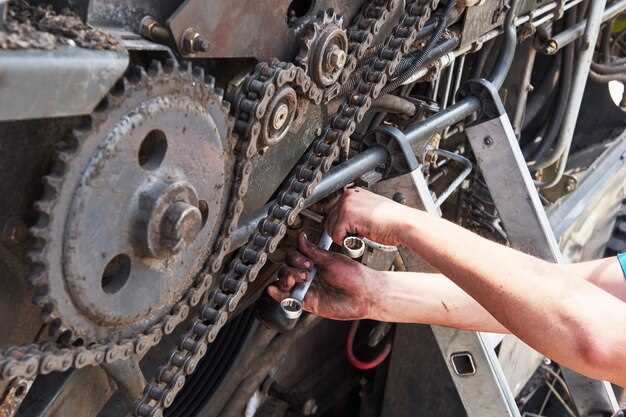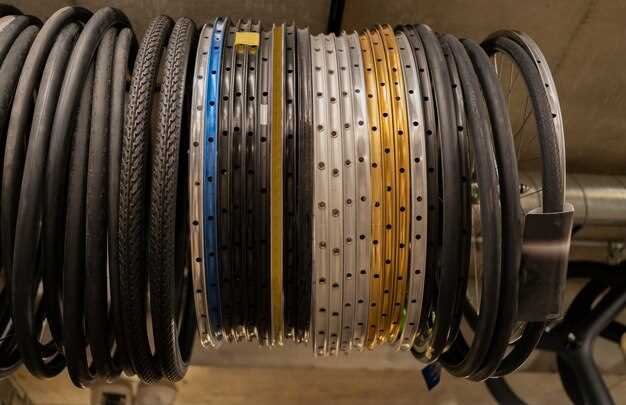
In the high-stakes world of competitive racing, every part of a vehicle plays a crucial role in maximizing performance. Over time, however, even the most robust components are susceptible to wear and tear. This article delves into the vital process of identifying and assessing the condition of racing parts, ensuring that teams can maintain their edge on the track.
Understanding the factors that contribute to worn components is essential for any race engineer or technician. Components such as tires, brakes, and suspension parts experience significant stress during races, leading to gradual degradation. Recognizing the signs of wear not only helps in maintaining safety but also enhances overall vehicle efficiency and speed.
This guide will explore the various methods and techniques used to identify wear in race components, emphasizing the importance of regular inspection and maintenance. With effective evaluation and timely interventions, teams can significantly reduce the risks associated with failed parts and optimize their performance on race day.
Recognizing Signs of Material Fatigue in High-Performance Parts

In the world of racing, the performance and reliability of components are critical to success. Over time, high-performance parts experience wear and can develop material fatigue, which can lead to catastrophic failure. Recognizing the signs of material fatigue early can prevent costly breakdowns and enhance the longevity of racing components.
One of the primary indicators of material fatigue is the presence of micro-cracks on the surface of the part. These cracks usually start small, often invisible to the naked eye, but can grow over time due to repetitive stress during races. Regular inspections should include close examinations to detect any surface degradation that may indicate underlying issues.
Another sign of fatigue is unusual discoloration or changes in texture on the surface of the material. This alteration can suggest overheating due to excessive friction or incorrect material properties being utilized. It’s essential to monitor these changes, as they may lead to significant wear and eventual failure during operation.
Deformations such as warping or bending are also clear signals of material fatigue. High-performance parts are designed to withstand intense stress; however, as they undergo repeated loading cycles, they can begin to lose their shape. Even slight deformations can compromise the integrity of components, leading to performance degradation.
Listening for unusual sounds during operation is another aspect to consider. Increased vibrations or noises can indicate loose parts or imminent failure within the components. These auditory cues should prompt immediate inspection and analysis to identify the root cause before performance is severely affected.
Ultimately, understanding and recognizing these signs of material fatigue in high-performance race components is vital for preventing failure. Regular maintenance, close inspections, and being vigilant for any changes can ensure that equipment remains competitive and reliable on the track.
Assessing the Lifespan of Critical Components During Race Preparation
Race preparation involves meticulous attention to the condition of critical components. The assessment of wear on these parts is essential to prevent unexpected failure during competition. Various factors contribute to wear, including the intensity of usage, environmental conditions, and material fatigue. Prioritizing component inspection can significantly enhance performance and safety.
Key components, such as brakes, tires, and suspension systems, experience varying degrees of stress during a race. Regular inspections should be conducted to identify wear patterns that may indicate impending failure. For instance, brake pads that show signs of significant wear may compromise stopping power, risking both driver safety and race outcomes.
Tires, another crucial element, undergo rapid degradation due to heat and friction. Assessing tread depth and surface integrity is vital in determining their lifespan. Worn tires not only decrease grip but also increase the risk of blowouts, which can lead to catastrophic results in a competitive environment.
Suspension systems also require careful evaluation. Components like shocks and struts endure substantial forces, leading to wear that can affect vehicle handling. Any signs of leakage or abnormal noises should be addressed promptly to avoid failures that can adversely impact race performance.
Conducting life assessments of these components involves mathematical calculations and field data analysis. Understanding the average lifespan of each part, in conjunction with accumulated operational hours, allows teams to forecast replacements accurately. Keeping a detailed log of component usage and maintenance can aid in making informed decisions about when to replace parts before they fail.
In conclusion, assessing the lifespan of critical race components is non-negotiable. By staying vigilant regarding wear and proactively replacing parts at risk of failure, teams can ensure optimal performance and increase their chances of success on the racetrack.
Implementing Routine Inspections to Prevent Component Failures

In the high-stakes world of racing, the performance of each vehicle component is critical. Routine inspections are essential for identifying wear that can lead to component failures. By regularly assessing each part, teams can enhance reliability and safety on the track.
Key aspects of implementing routine inspections include:
- Establishing a Schedule: Create a detailed inspection schedule to ensure no part is overlooked. Inspections should be conducted before, during, and after races.
- Developing Checklists: Utilize checklists tailored to each component. This ensures that every part is systematically evaluated for signs of wear.
- Training Personnel: Ensure that team members are trained to recognize wear indicators. Their expertise is vital in early detection of potential failures.
Common components to inspect include:
- Brakes: Examine pads, rotors, and calipers for signs of wear.
- Tires: Check tread depth and any damage to the sidewalls.
- Suspension: Assess shock absorbers and bushings for degradation.
- Engine Parts: Monitor belts, hoses, and gaskets for wear and leaks.
Documentation is crucial. Maintain records of all inspections to track the condition of each part over time. This data can help predict when components will need replacing, minimizing the risk of unexpected failures.
By committing to routine inspections, teams can efficiently manage wear in race components, ensuring optimal performance and enhancing longevity, ultimately leading to a more successful racing experience.



